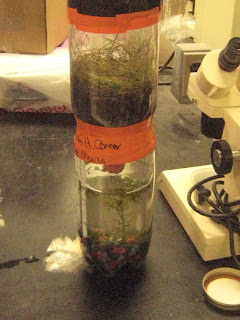The purpose of this lab is to show how large eared animal rely on their ears to avoid predators and rely on theirs ears to find prey, so many of the animals ears swivel in different directions to pick on prey coming or predators.
What are we testing and how??
We were testing how far you could hear the pen click as you back up farther and farther back from the person clicking the pen, who was Mrs. Richardson that was checking the pen.
Table
| Student | Distance with | Distance with Enhanced Ear |
| Jessie | 27.9 | 52.9 |
| Albert | 55 | 50 |
| Reese | 45 | 60 |
| Tangie | 68.6 | 58.6 |
| Brandon W. | 58.6 | 78.6 |
| Kasey | 25.3 | 15.3 |
| David | 40.6 | 55.6 |
| Emily P | 30.6 | 55.6 |
| Sierra | 53.8 | 55.6 |
| Stephanie | 34.4 | 47.8 |
| RaeShar | 57 | 63.7 |
| Rayshawn | 47.6 | 41.6 |
| Montez | 45.6 | 30.6 |
| 51.6 | 87.9 | |
| TJ | 40.6 | 63.3 |
| Travis | 50.6 | 55.6 |
| Conner | 89.7 | 128.9 |
| Brandon H | 58.6 | 87.2 |
| Emily S | 64.7 | 76.3 |
| Total | 945.8 | 1135.1 |
| Average | 49.77 | 59.7 |
Bar Graph
Answer Question from the box
Yes, it made differences because of the simple fact that the ears made us able to hear farther away as we backed up from the pen clicking, but it was also the conditions we had to. Like the wind blowing and people talking, like if the wind was in your favor then you could hear the pen clicking farther back then usually because the wind would carry the pen clicking making it louder. People talking also blocked out the pen clicking.
Large Eared Animals
Fennec FoxAfrican Bush Elephant
Bat Eared Fox

Brown Large Eared Bat

Large Eared Jerboa
Small Eared Animals
Ferret

Polar Bear

Chipmunks




















